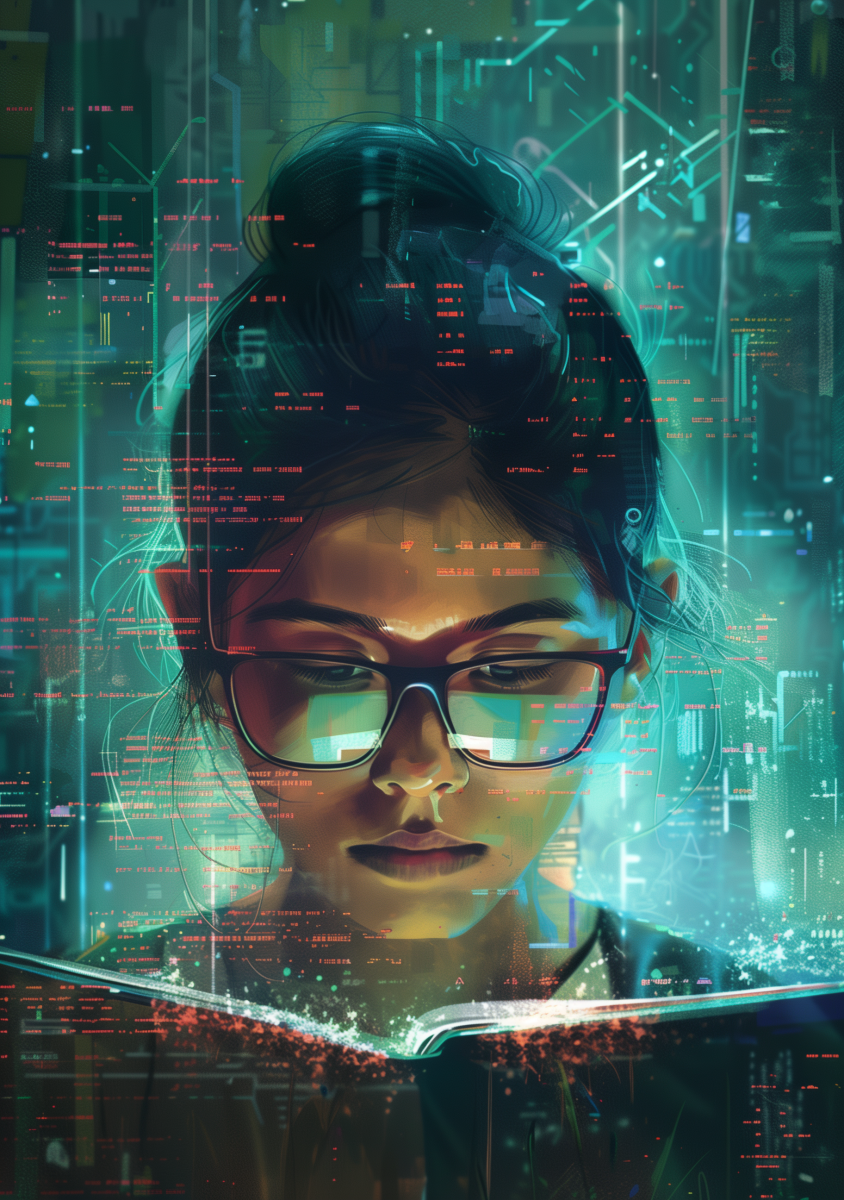The Future of Education With AI
Indeed, Technology is transforming industries, economies, and societies worldwide by simulating human intelligence processes. In education, AI holds immense potential for personalized learning experiences, optimizing teaching methodologies, and preparing

In Nepal, the education system faces unique cultural and infrastructural challenges. This article explores the transformative potential of AI in Nepalese education and its role in shaping the future of learning for students across the country.
Welcome to a groundbreaking conversation with Alok Khatri a seasoned expert in the field, who discusses the transformative power of artificial intelligence (AI) in shaping the educational landscape in Nepal. In this exclusive conversation for Smart Family Magazine's special School issue, we will explore the fusion of technology, culture, policy, and infrastructure, highlighting how AI is revolutionizing traditional teaching methods and preparing students for future challenges. He highlights the role of AI in reshaping educational policies, enhancing teacher training, and fostering a dynamic learning environment. This article aims to bridge the gap between cognitive development, digital literacy skills, and curriculum objectives, empowering parents to make informed decisions and prepare their children for a future driven by innovation and knowledge.
- How do you envision the future of education with artificial intelligence transforming the traditional education system in Nepal, considering the unique cultural and infrastructural challenges the country faces?
The current education system is primarily structured into four levels. This structure has led to students struggling at certain standards and outperforming others in their specific areas. As a result, the education system is not tailored to meet students' skill levels from different dimensions. To address this issue, AI can be used to make learning personalized and accessible to all students. By adapting to individual needs and preferences, AI can provide adaptive learning that meets the individual's needs. As technology continues to advance, traditional systems may become obsolete.
The future of education and traditional systems will likely see knowledge becoming smaller and more accessible to everyone. Traditional education may become obsolete as graduates become unemployed and lack the skills needed for recognition management. The digital native generation, who have a high screen time, is not a part of the traditional education system. They are more digital-savvy and understand the importance of algorithms in their lives. As a result, traditional education may become less sedentary, as students are already living in an algorithmic world. In conclusion, the future of education and traditional systems will likely see a shift towards personalized and adaptive learning.
- As technology rapidly evolves, what role do parents play in guiding their children's interaction with AI-powered educational tools and ensuring a balanced learning experience?
Parents play a crucial role in shaping their children's future success. Understanding technology is essential, as it is not just about how AI functions on a fundamental level. The market is responding to digital content, and it is impossible to take someone away from it. Parents need to push their children toward economic opportunities as soon as possible, even in high school. This includes encouraging them to work in digital aspects like writing content and making videos. The next wave of technological activity is expected to be blockchain, which will change the game economy. However, it is difficult to predict what will happen with games and the game economy at this time. Blockchain and AI are based on ledger actions, and changes in these elements are difficult to predict. Parents should encourage their children to be digital, learn themselves, and create a foundation for their children's future success. This emphasis on digital literacy and innovation will be crucial in preparing individuals for the rapidly evolving technological landscape.
- How do you envision the role of teachers evolving alongside advancements in AI? Do you anticipate a future where AI could replace or greatly enhance traditional teaching methods?
It is important for teachers in the modern classroom, particularly in the context of AI and AI-driven content. Teachers are tasked with providing knowledge and pushing it out to students, which is crucial for the entire system. As AI becomes more prevalent, courses like management education are likely to be outsourced, affecting the teaching process. Teachers must understand the two muscles: the open and learning muscles, and how it works for all students.
It is necessary to understand the shift towards flip lectures, where students engage in content as a discussion, such as projects, rather than straight lectures. This new teaching method is not a skill that can be learned over a weekend or in workshops, but rather a process that requires internalization and time. Teachers will face challenges, particularly from young teachers and older generations, as technology continues to evolve and change the way we teach and learn. It is crucial for teachers of all ages to continuously educate themselves and stay current with new methods and tools to effectively engage students in the modern classroom.

- How policymakers in Nepal can use AI to update education policies, ensuring they are in sync with technological advancements and capable of preparing students for the future.
Data science and cloud-based education are crucial for global collaborations and addressing educational challenges. In Nepal, foreign education is being explored as a potential solution. The country faces challenges in understanding and addressing the issues faced by immigrants. Education policies, innovation, and reports are also being considered to change the wave of education. Research Nepal, a homegrown resource researcher education, offers a unique opportunity for students to gain exposure and mentorship. This can be achieved through work and exposure to different communities. The potential for students to gain exposure and research abroad is not limited to higher education levels. Mobile phone users can be a valuable resource for students, as they can cancel diagnoses within five minutes when researching anywhere else.
- How AI can serve as a valuable tool in addressing the challenges of teacher shortage and inadequate training in Nepal, particularly in subjects like STEM?
The issues in schools can be a golden opportunity to address teacher churn. Schools need to focus on understanding database management and building infrastructure, since beginning classes for grades. This will allow schools to pay more to the equipped and valuable teachers and maintain robust technology on the back end. Teachers should focus on doing what the school needs with robust database engineering, rather than doing their own thing. Schools that do not adapt to database management and content placement will lose the game, and this will likely be a global challenge for them. Therefore, schools should focus on understanding database management and content placement to capitalize on this opportunity.
- AI-driven educational technologies raise concerns about data privacy and security. How can we navigate these while embracing the benefits of AI in education?
There are potential risks associated with large language models, such as script language from the entire internet, and the need to address them on a multinational and individual level. I suggest using avatars and immutated muted images of people instead of putting one's face or voice on any social media platform. This can be done early, making it easier for AI to learn and make decisions. I believe that the risks are not significant, especially for students, and the volume of the impact of defect technology is less. Additionally, implementing strict privacy settings and being cautious about the information shared online can also help mitigate these risks. Individuals need to stay informed about the potential dangers and take proactive measures to protect themselves in the digital world.
- How can schools determine the appropriate age or grade level at which to introduce AI-powered educational tools, considering factors such as cognitive development, digital literacy skills, and the curriculum's learning objectives?
One of the important factors is early research in understanding the impact of technology on children's development. A need for a strong relationship between schools, parents, and children to monitor their experiences with technology. I believe that there is no minimum age for children to use technology, as they are already exposed to it early in their lives. Schools should have specialized resources to address psychological and emotional health issues, as well as create a loop to monitor progress. In various countries, they are used to assess the social, emotional, learning, and academic performance of healthy students. Data engineers and data centers can iterate quickly to improve the process. In Dubai, the answer is to have parents and teachers meet to discuss the recording process of data, including mental, physical, and emotional health, service, and academic processes. A matrix is submitted, and discussions are held about the child's development. Data science and AI analysis can help train AI to assist learners, but schools must be prepared to invest in data recordings and data analysis over three years. This will help schools better understand the impact of technology on children's development and provide necessary support for their learning journey.



